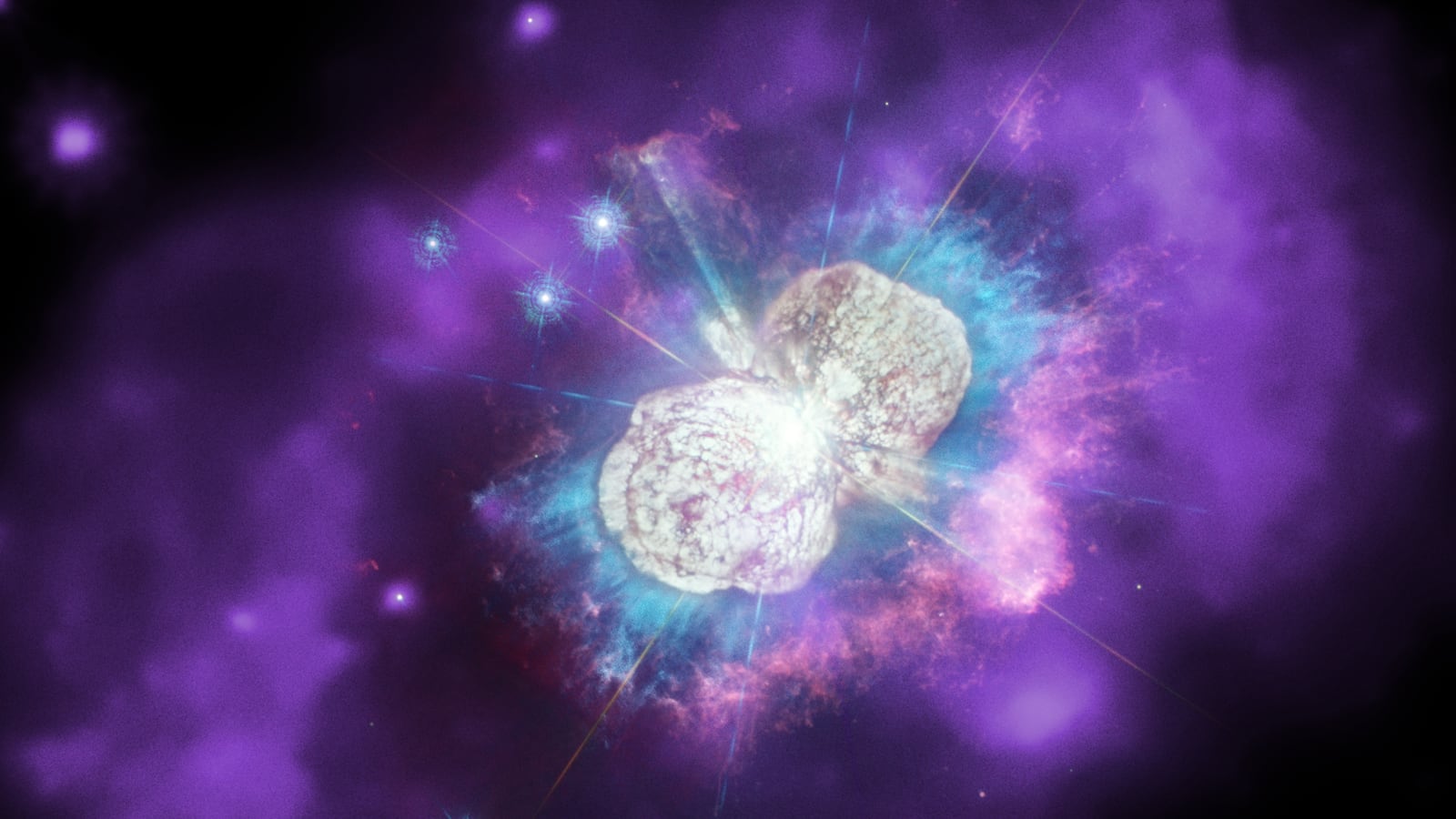Eta Carinae was once one of the brightest stars in the night sky—a light that seafarers would use as a guide along with the North Star. Then, in the middle of the 19th century, it seemed to abruptly disappear after having one of the most famous violent outbursts in astronomy, the 1843 Great Eruption, which released as much visible light as a supernova.
Scientists have now used images taken by NASA’s Hubble Space Telescope and Chandra X-Ray Observatory to create an exquisitely detailed 3D model for how the Eta Carinae eruption unfolded more than 7,500 light years away. Though Eta Carinae survived the outburst, it ejected clouds of dense gas and matter that formed into the hourglass shaped Homunculus Nebula. Using data collected across several different wavelengths, the new model is a brilliant tour at the vivid nebula.
Besides acting as compelling eye candy, the new model helps scientists better understand the evolution of bright, massive stars like Eta Carinae and the violent transitions they make into new phases of their life. Eventually, Eta Carinae will collapse into a blackhole (probably after a more formal supernova). We’ll be long dead before we can witness it, but modern astronomers are doing all they can to anticipate what such an event might look like to future stargazers.







